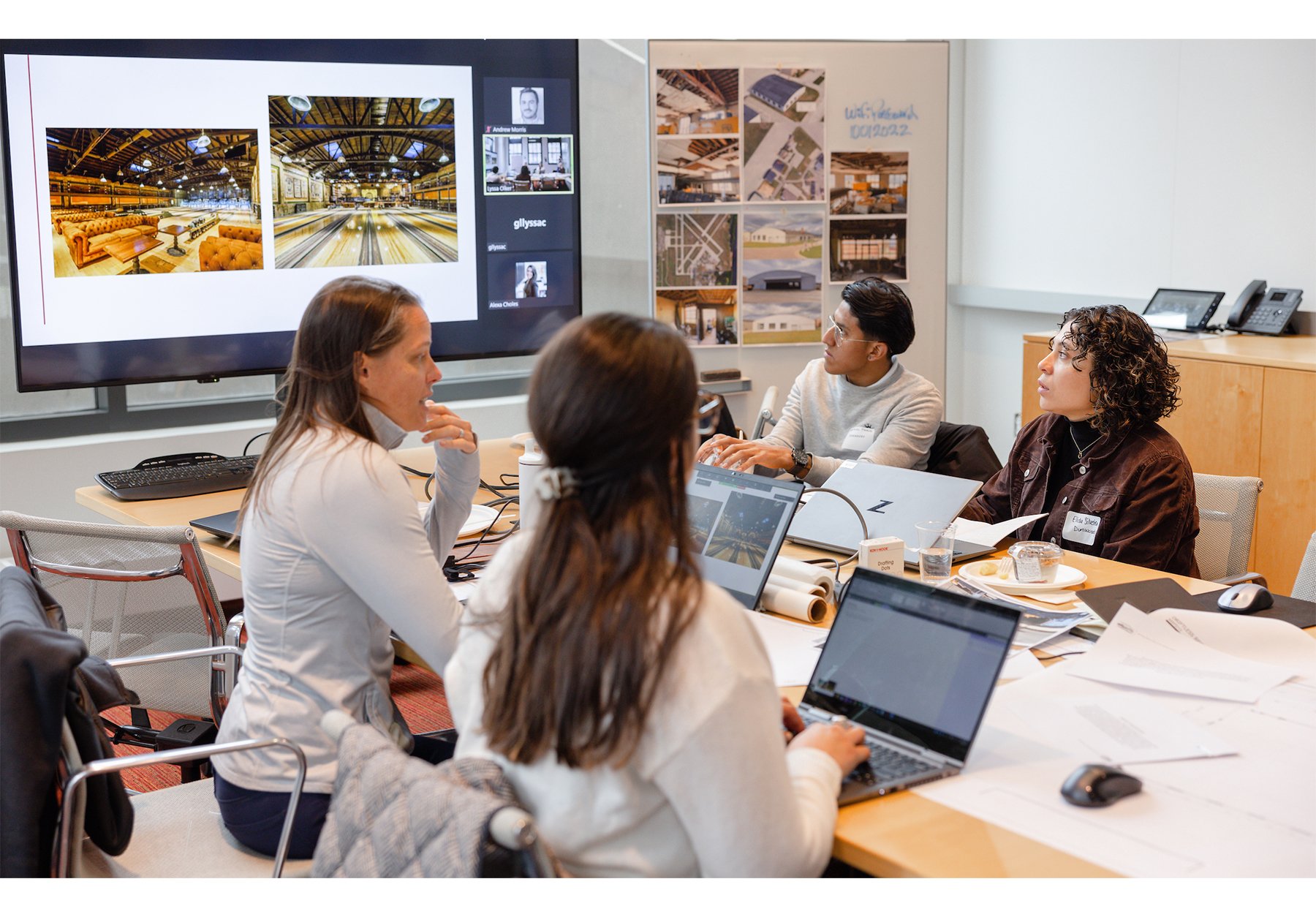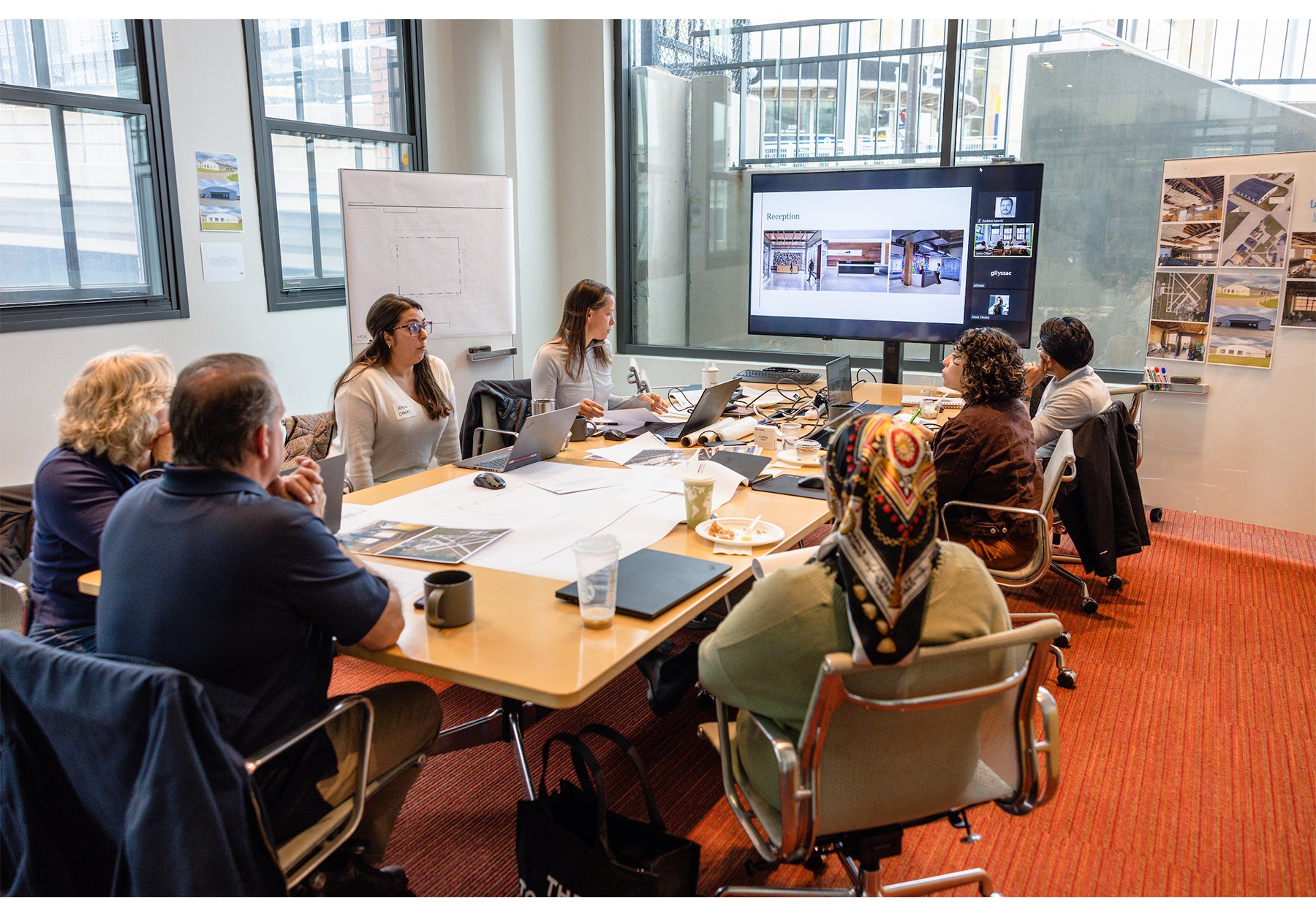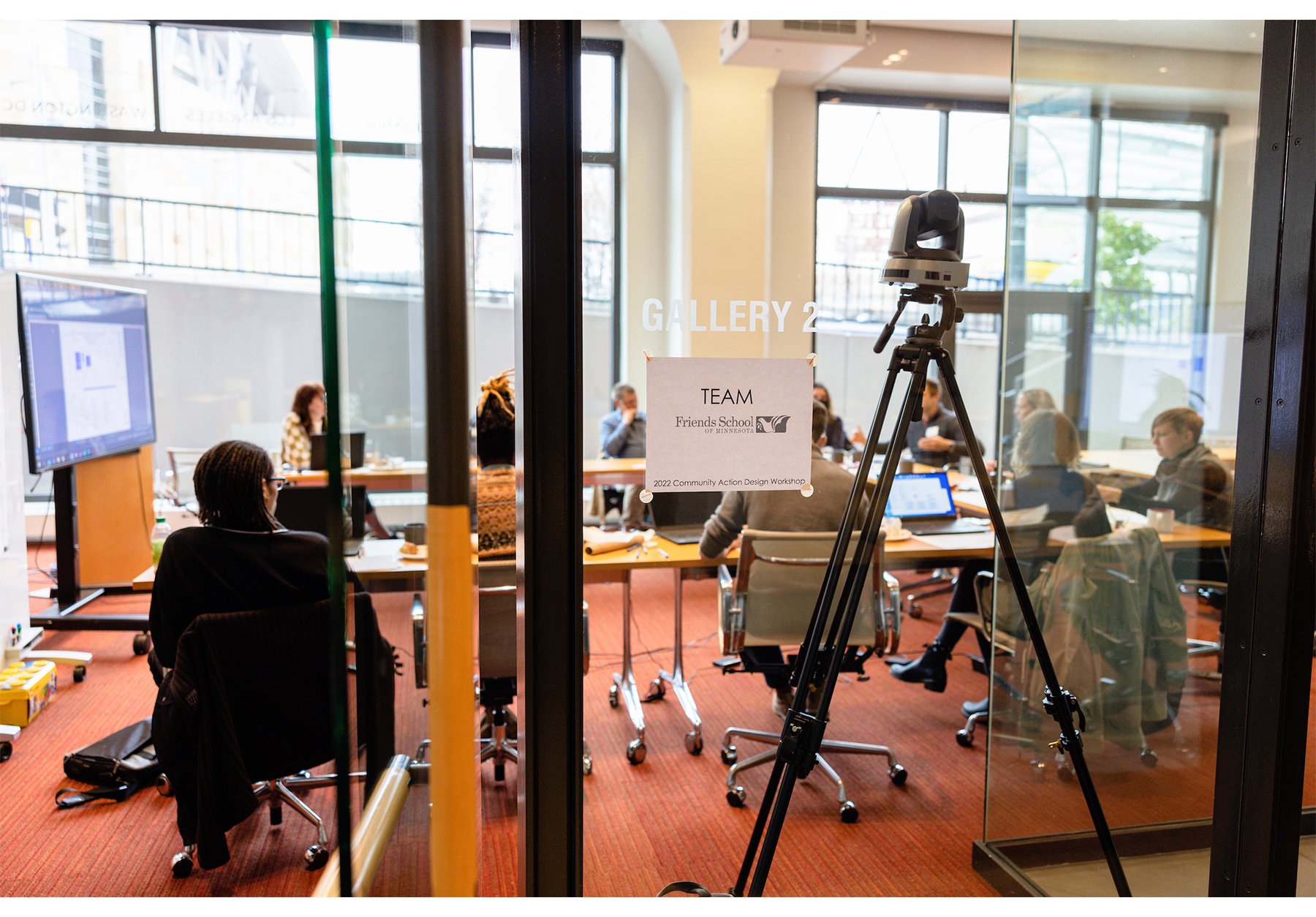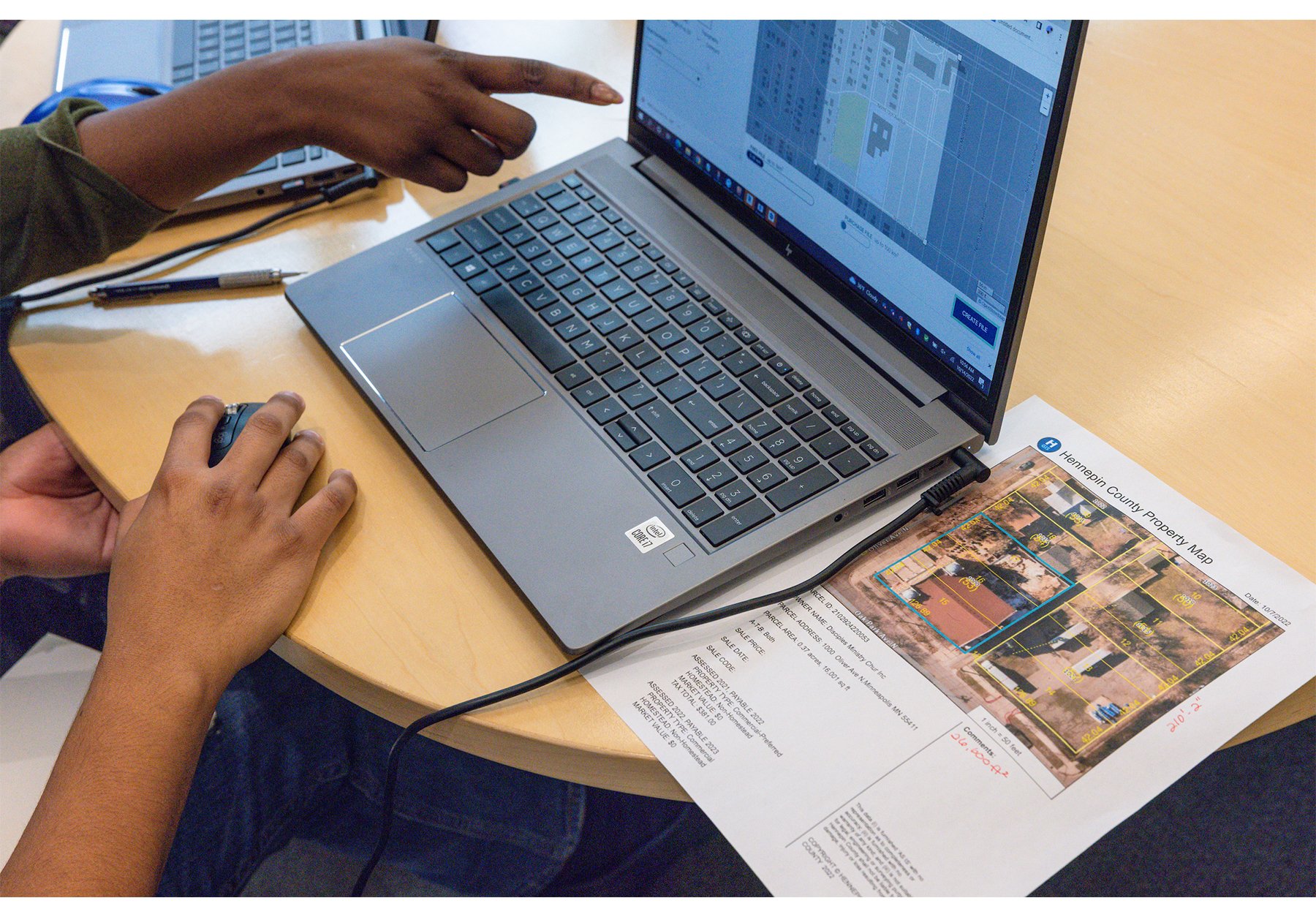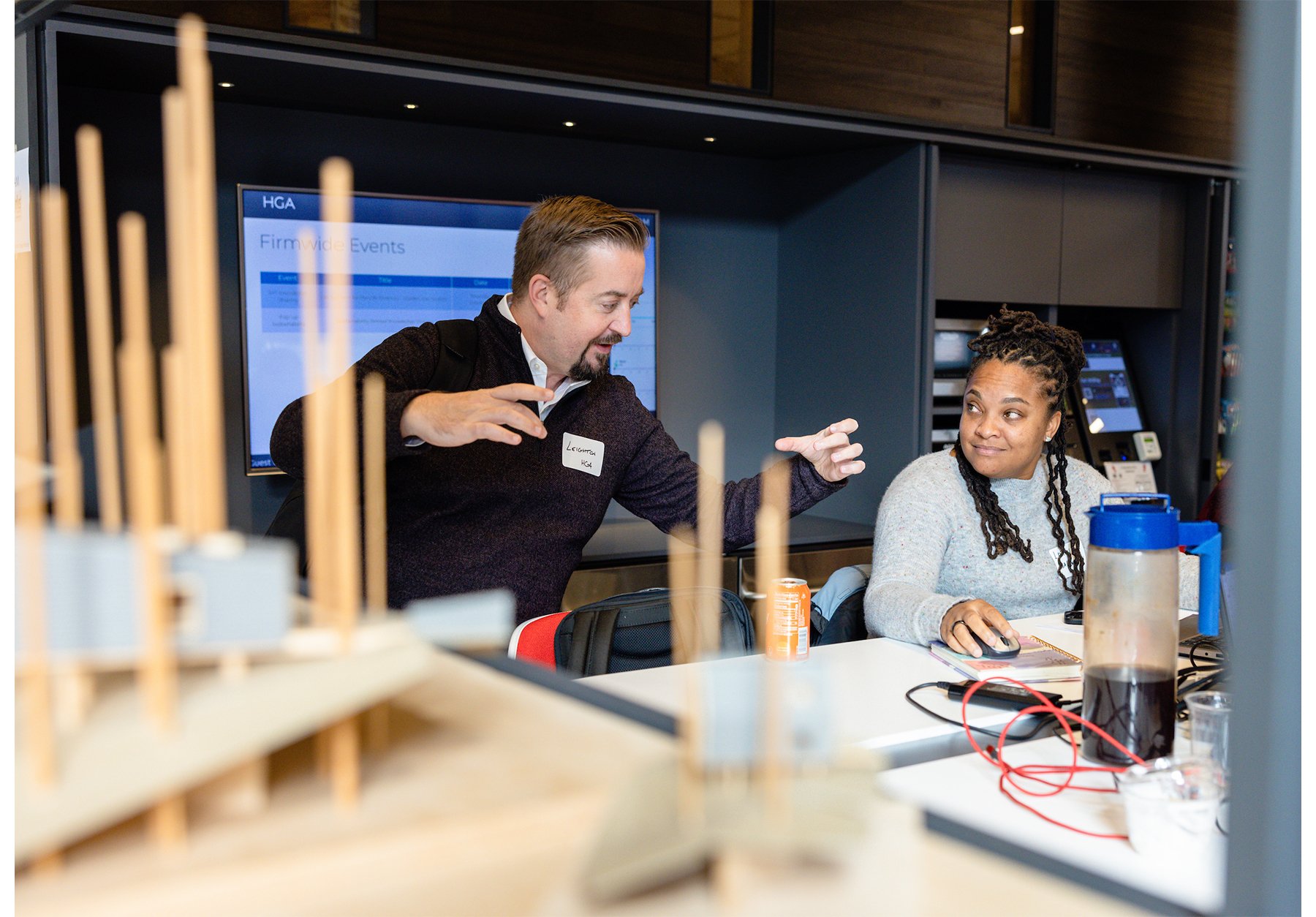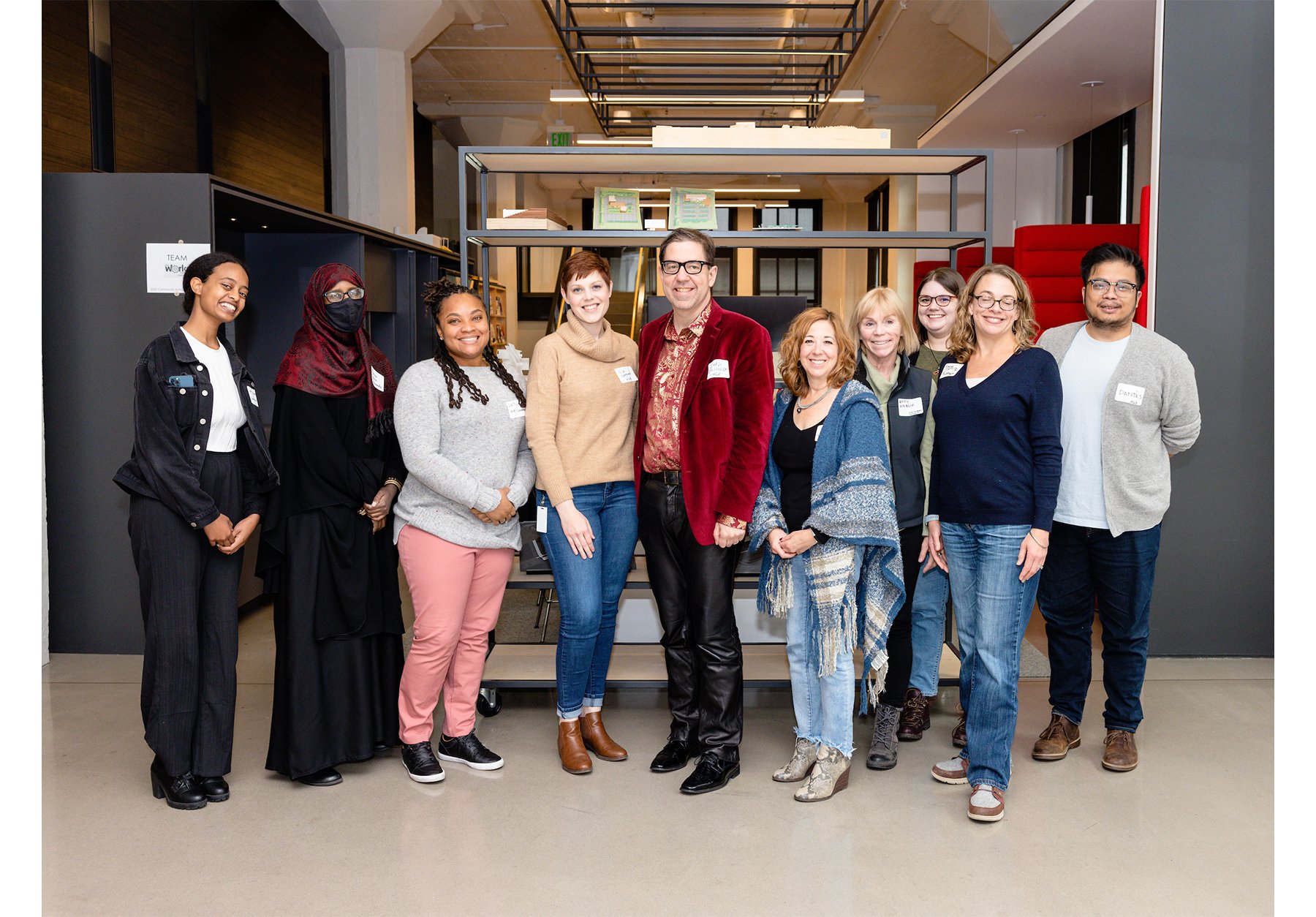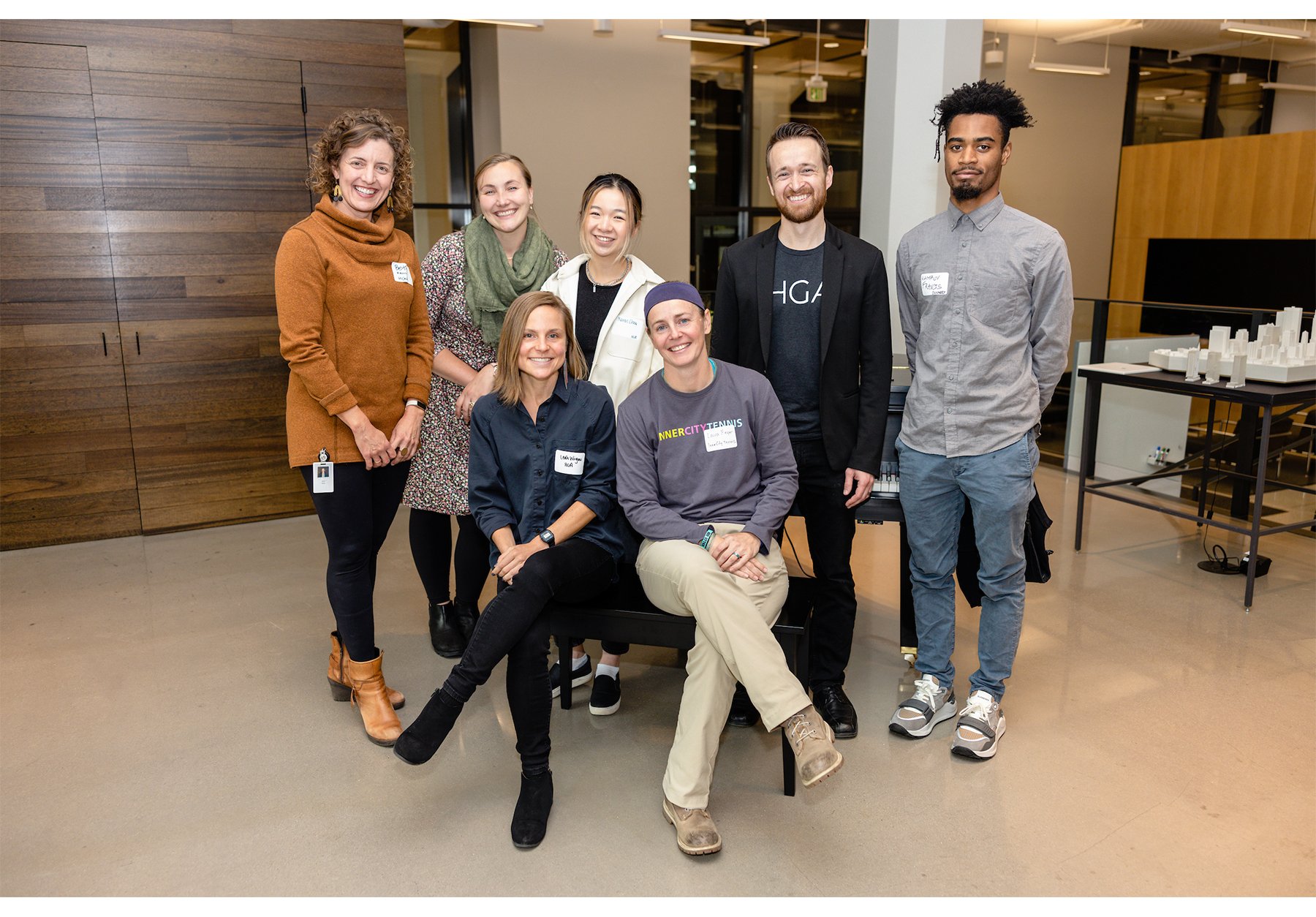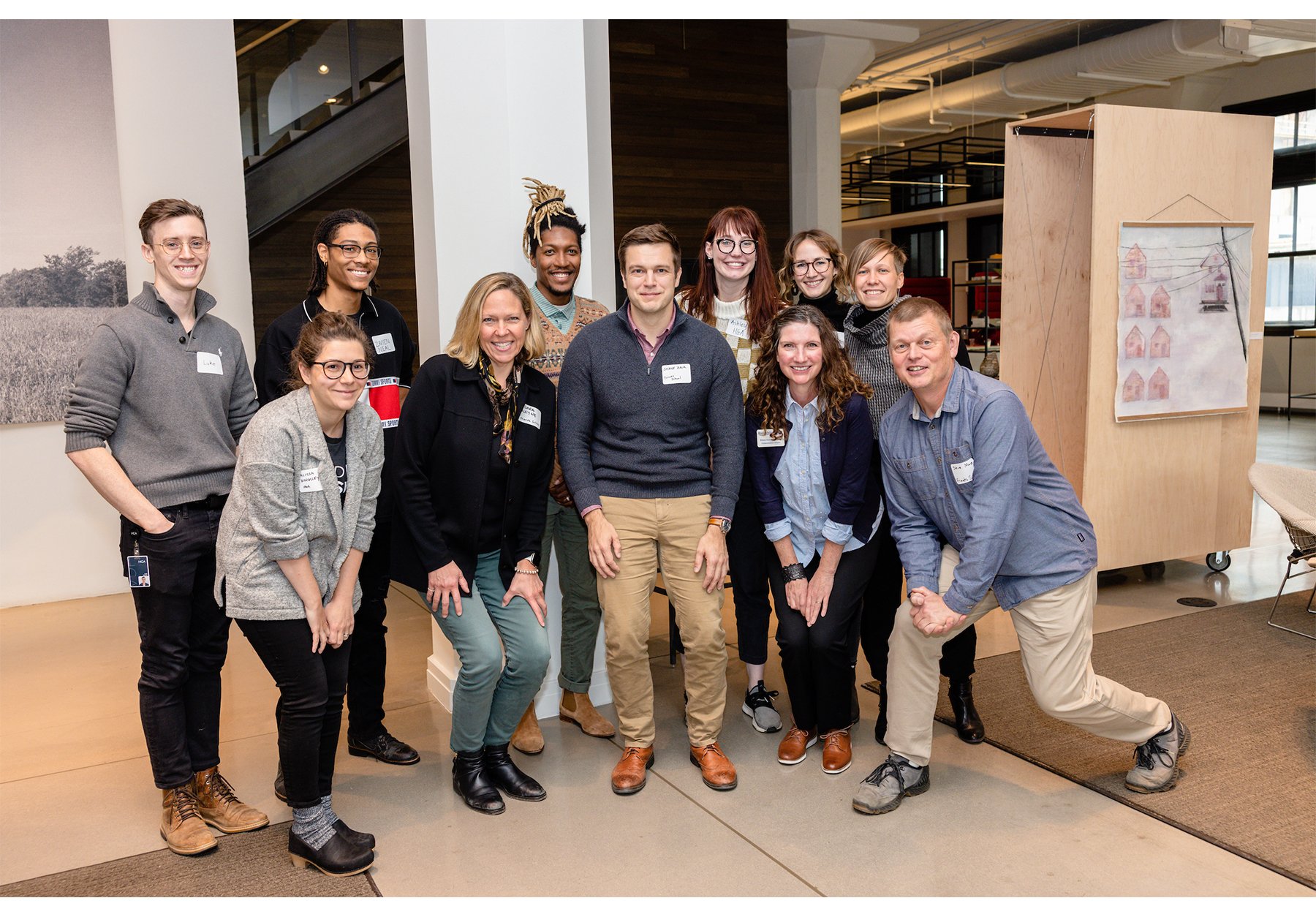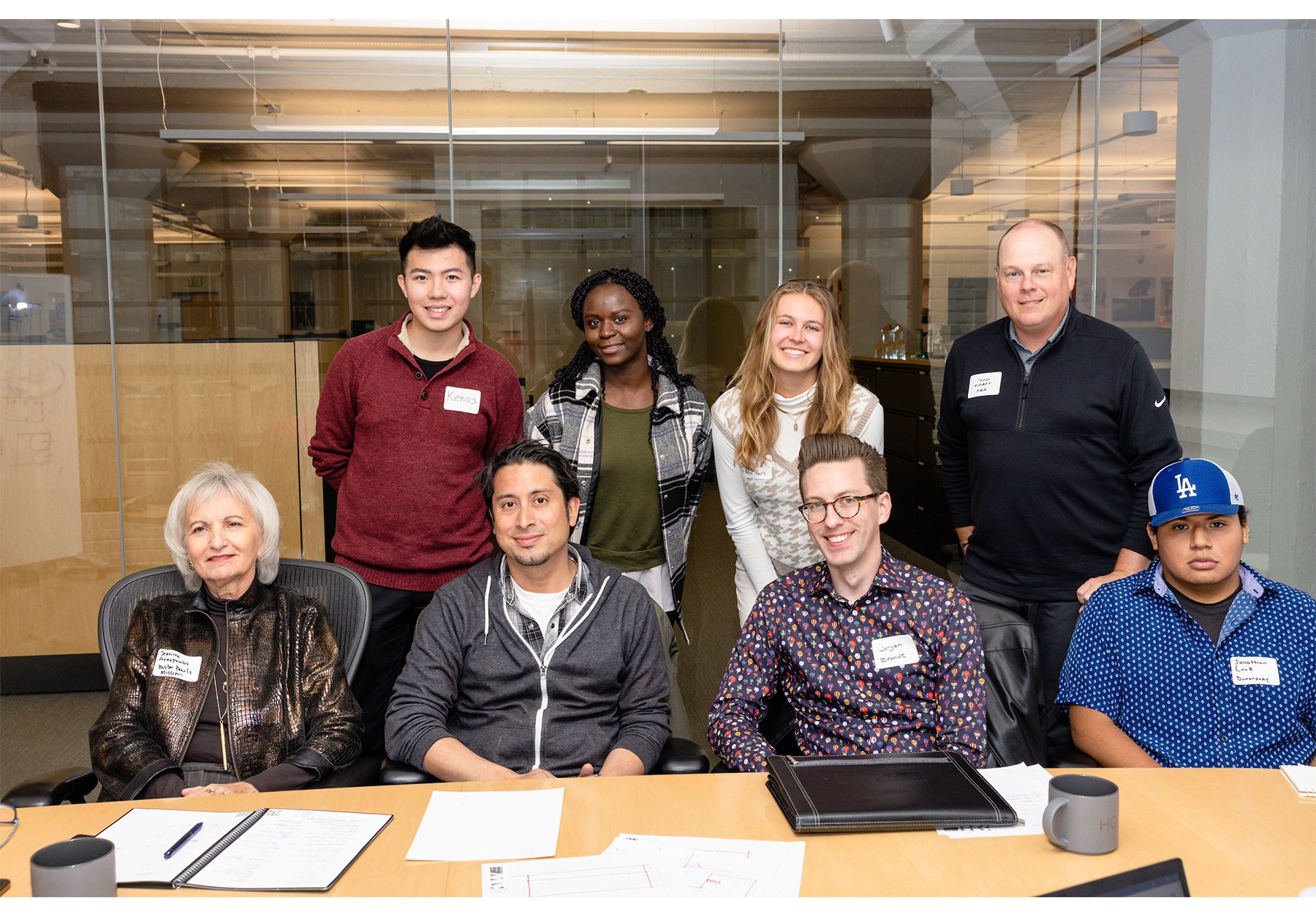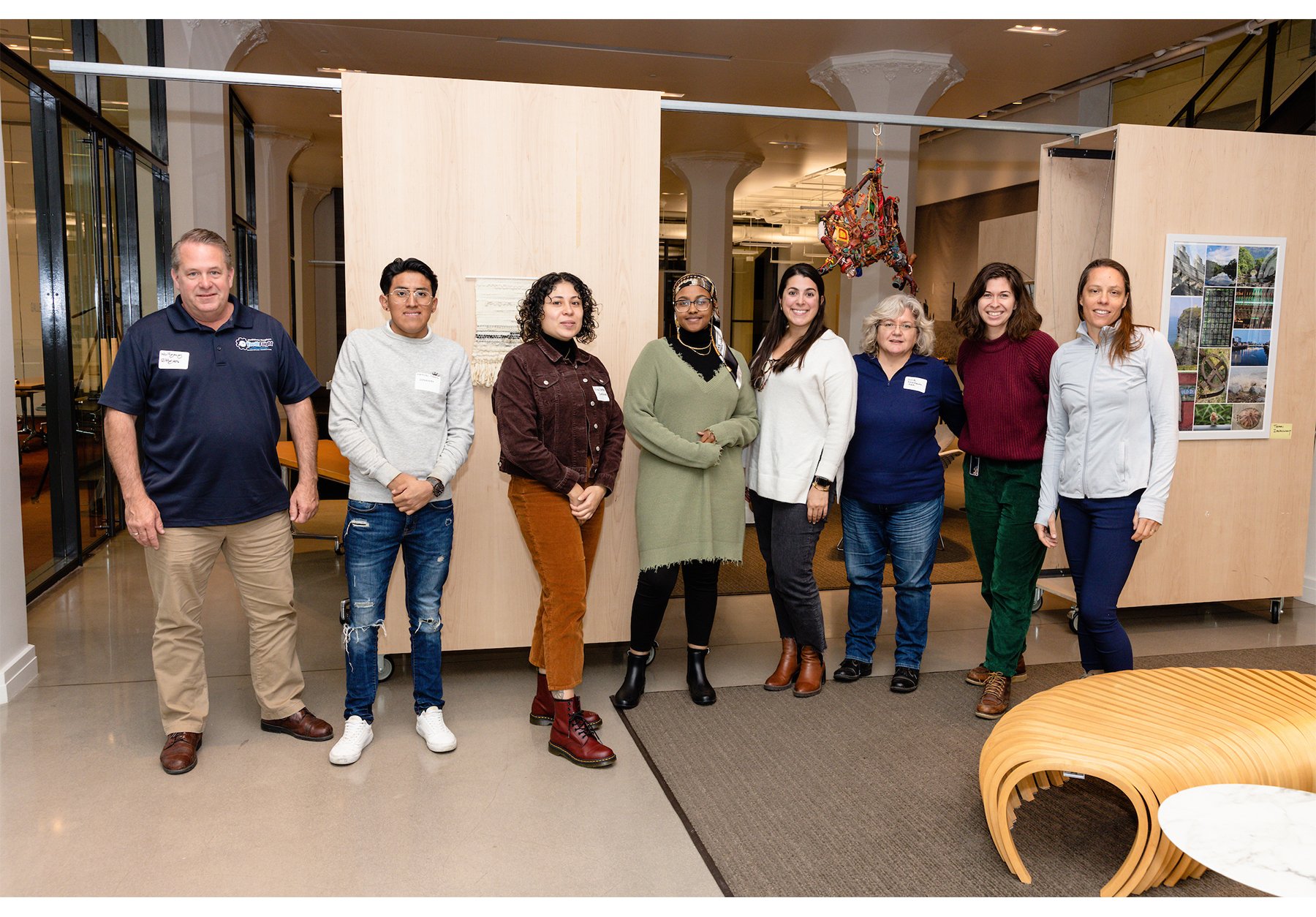Dunwoody College Architecture Students Contribute to HGA’s Community Design Workshops
Members of the school’s student chapter of the National Organization of Minority Architects gain insights into architect-client collaboration
By Cinnamon Janzer | February 9, 2023
Dunwoody Bachelor of Architecture student Lina Ahmed at work in one of the October 2022 workshops. Photo by Kathy M Helgeson/Dunwoody College.
FEATURE
Last October, architecture students worked alongside HGA design professionals in pro bono workshops for nonprofit organizations serving Minnesotans. They tackled design problems like a parking lot that disconnects a school from its playground and helped design a striking entry to a museum that protects visitors from the elements. The teams also had larger discussions on societal issues such as homelessness, food insecurity, student access to trade training, and inner-city youth access to recreational and skills-building programs.
HGA began hosting these annual one-day design workshops for nonprofits and other values-aligned community groups in 2015 as a part of its Community Action initiative. The workshop teams are typically composed of four or five HGA professionals and two architecture students. “We partner with nonprofits who otherwise could not afford architecture services early in the design process,” says Kaitlin Schalow, AIA, a project architect at HGA and co-chair of the firm’s national Community Action efforts. “The workshops generate conceptual design, imagery, and other materials that they can use for a capital campaign to turn their vision into a reality.”
The students are members of the student chapter of the National Organization of Minority Architects (NOMA) at Dunwoody College of Technology in Minneapolis. Their paid, hands-on work in the workshops is experience that can be hard to come by, especially for working students who are less likely to be able to afford to take on unpaid internships. That doesn’t mean the students are being given a helping hand.
After site visits in the morning, the five workshops unfolded at the HGA studio in Minneapolis. Photos by Kathy M Helgeson/Dunwoody College.
“With programs like this one, it’s about the firms looking at the students as assets. It’s about the firms saying, ‘We need your students’ voices because the profession has not diversified,’” says Anjali Ganapathy, Assoc. AIA, NOMA, associate professor of architecture at Dunwoody and former faculty advisor for the NOMAS chapter. (The added S is for “Students.”)
HGA pays the students out of the one percent of its revenue it has committed to giving back to communities. Many Dunwoody students are working students; with compensation, the students don’t have to choose between valuable experience and income.
“Getting paid is a big deal, because there are a lot of unpaid internships out there,” says Lina Ahmed, a fifth-year student who participated in the workshops the past two years. The pay “makes you feel like your contribution is valued. We have a lot of tuition and bills.”
“These students are really focused on social impacts. Fast-forward a generation, with all these students coming into the profession. What that means for architecture is really powerful.”
Last year, the students came up with an equitable way to determine who would get the 10 coveted spots among the five workshops: Five spots went to fifth-year students, the other five to those in their third and fourth years. From there, they drew names out of a hat. “We decided as a group that it was the fairest way,” says Ahmed.
The workshops were held on October 14. Ahmed worked on the entry for a children’s engineering museum in Bloomington. “They needed a space where kids who were dropped off from school buses could gather in front of the building, protected from the rain or snow,” she explains. “We designed this cog system that would be motion-activated when you go into the building”—an approach that played off the museum’s interactive offerings.
Niall-Julian Universe, a fourth-year student, worked on the playground project for a Quaker school in St. Paul. “We were collaborating—asking questions, writing down ideas. When it was time for lunch, we didn’t want to stop. We were in the magic and wanted to keep pushing,” he says. Ultimately, the team proposed using mobile plant berms to safely separate parking spaces from the playground while still making the most of the space. “They can use the remaining pavement to draw out [the game] four square and things like that,” he explains. “And they can move the berms to get parking back instantly.”
Both Universe and Ahmed took a lot away from the experience. For Universe, it was eye-opening to see the process unfold from “email communication to walking the site and then actually designing.” Ahmed agrees that seeing how professionals communicate with clients was extremely valuable, as was the opportunity to make connections with professionals in the field.
“These students are really focused on social impacts,” says HGA design principal Glenn Waguespack, AIA. “Fast-forward a generation, with all these students coming into the profession. What that means for architecture is really powerful.”
“They’ve changed the way I see the next generation,” adds Schalow. “They bring so much energy into how they talk about issues like sustainability, equity, and how they see the profession changing. It lights me up.” One of the students who participated in 2021 now interns at HGA.
In HGA’s partnership with Dunwoody, Ganapathy sees an opportunity for firms of all sizes, including those without resources for summer and year-long internships. She also sees an opportunity for firms to reevaluate their criteria for student interns. “Many firms are reaching for the Harvard and Yale students,” she says, “when what they need these days are students who live in and are engaged with the communities where the firms are getting work.”
The nonprofits participating in the 2022 Community Design Workshops were InnerCity Tennis, The Works Museum, Friends School of Minnesota, Driftless Region Youth Flight, Disciples Ministry Church, and CloseKnit.


